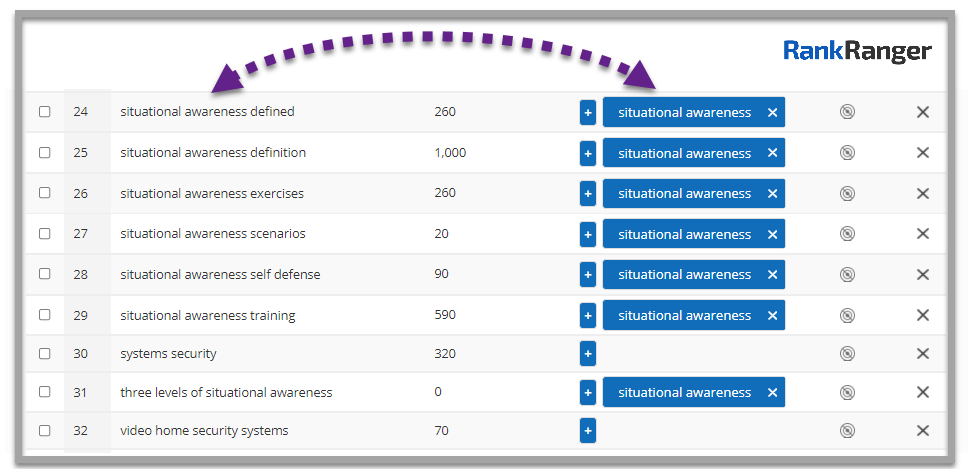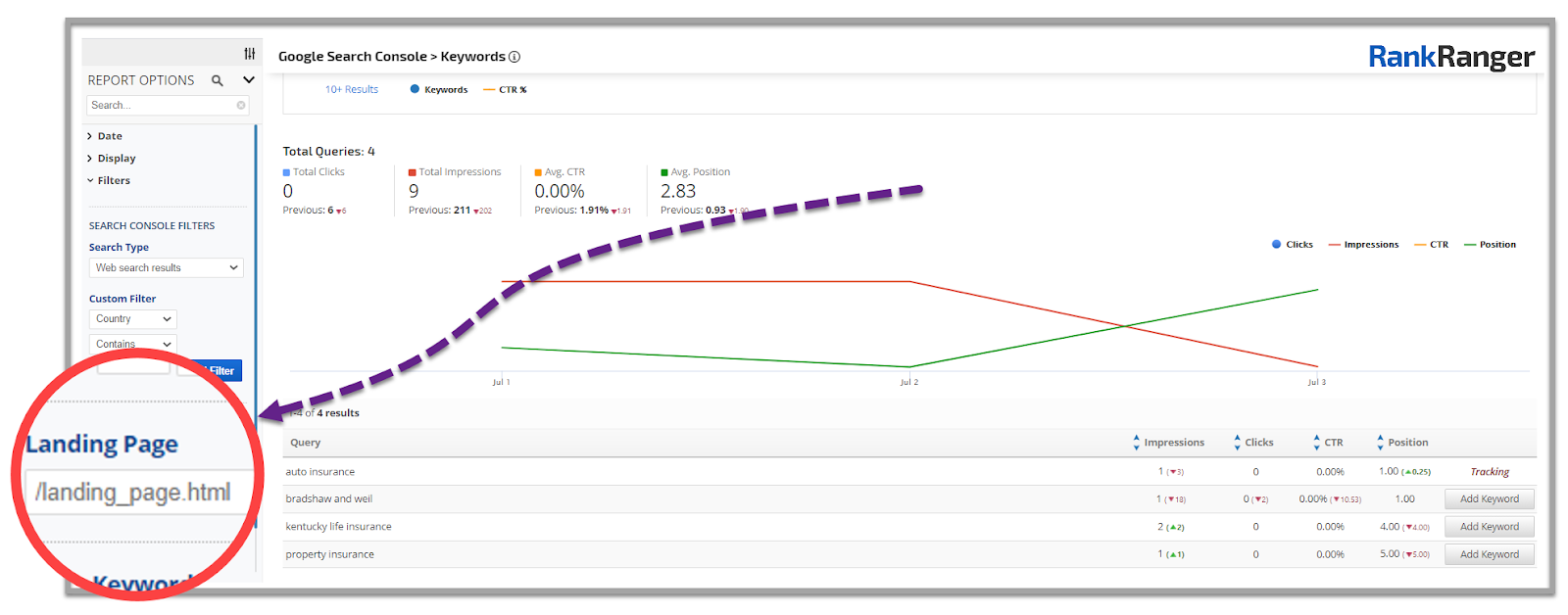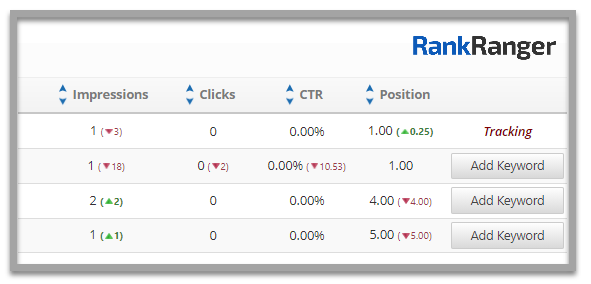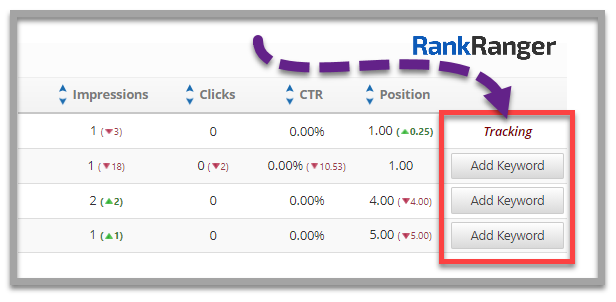Posted by
Darrell Mordecai
There is a point in every SEO’s development where you graduate from Google Search Console to a paid rank tracking tool.
That point usually comes when you realize that rank trackers don’t just offer you an accurate picture of your rankings, but also give you a host of analytics tools you can use to get a deeper understanding of your rankings.
And who doesn’t **** gleaning actionable insights from data?
However, one of the difficulties you might find when making the transition is that Search Console picks keywords for you. Rank Trackers, on the other hand, only give you data based on the keywords you choose.
This leaves you with a difficulty. How do you pick SEO keywords to track?
Where do you even begin?
What’s more, getting this wrong can affect your entire campaign.
Now, in case you were wondering what is a rank tracker, a rank tracker is an SEO tool that tracks where your webpages are ranking in the search engine results pages.
Now, with that out the way…
In this post, I’ll show you a tried and tested method of finding laser-focused keywords (so that you don’t waste your time tracking low-impact keywords).
I’ll also show you a nifty shortcut in the Rank Ranger’s advanced rank tracking tool. 🙂
And…
On with the show.
Why do you Track the Keywords You Track?
As with anything in SEO (or life), it’s not enough to find a few tactics on the internet and call it a day.
No.
That kind of approach could lead to many hours of wasted time.
The reason is, not every tactic is appropriate for every situation.
Instead, you should think strategically. Think of strategy as the lever that allows you to lift a load much heavier than your own weight.
Tactics on the other hand are like brute strength. In other words, tactics are great when used in the right situation.
What I’m getting at is, when choosing keywords to track, you must be strategic.
What do you want to understand when you log into your dashboard?
What keywords will give you the insights that you need to help you achieve your SEO goals?
Picking the Right Keywords for Your Strategy
So, the question is, what is your strategy for improving your rankings and visibility?
Whether it’s on-page optimization or link building, whatever tactics you use, it always helps to have a strategic advantage. That way you can surf with the wave rather than swimming against it.
Yes, SEO and surfing have so many similarities. 🙂
In general, there are three approaches to picking keywords. Two of them offer you a strategic advantage and one doesn’t.
The Spray and Pray Approach
Firstly there is the spray and pray approach. Using this approach, the SEO does some keyword research into any relevant keywords related to their niche.
They then track pretty much anything and everything they find.
Don’t laugh.
We’ve probably all been there.
The problem with this method is that most of the keywords are either irrelevant or make little impact on your overall traffic. I’ll get into what low and high impact keywords are later on in this post.
And that brings us to the second option.
The Target Keyword Approach
When creating content designed to rank in search engines, generally the process starts with keyword research.
Once you know what keywords you want to target, you should go about creating the perfect piece of content that answers the search intent thoroughly. After doing a little competitor research, you should be able to guess what the search intent is. This will help you create content that users and search engines ****.
When this is your overall content creation process, deciding what to track in your rank tracking software is a no-brainer.
Track your target keyword.
This makes sense when you are creating new content. You generally design your content to rank on a SERP, taking search intent and competitor analysis into account.
At this point, I wouldn’t recommend digging around your keyword research tool to find some long-tail variations. Not unless you are specifically trying to rank on those SERPs as well.
The reason is…
When your content starts ranking in search engines, it will also naturally rank for long-tail variations. This means it makes sense to publish your content and then do nothing with it for a while.
After a little time, your content will start to get impressions.
This is because Google will start to test where your content should feature in its search results pages. These tests include:
- Which SERPs to feature your content on
- Where to rank your content
- What SERP features your content should feature
When Google has done its magic, it’s time to do a second round of keyword picking.
But this time, you should go cherry-picking.

Cherry Picking – Keywords as a Benchmark
Now, I have to admit, this section was inspired by Lukasz Zelezny’s video on selecting keywords. He says you should use keywords as a benchmark.
So what on earth does that mean?
Think about this…
Have you ever been cherry-picking?
If you have, I’m sure your process looked something like this.
You find a cherry and probe it for blemishes and examine its color. Once you think you’ve found a diamond, you place it in your basket and move on.
Well, picking keywords should look the same way.
Since your content has been on the SERPs for a little while, there is pre-existing data to work with.
Where do you find it?
In Google’s good old rank tracking software, Search Console.
If you’ve been using Search Console for a while, you’ll know that it’ll tell you what SERPs your content is showing up on.
This makes it a great tool for understanding how Google understands your content and where Google thinks it should be.
Use this to your advantage.
This is your chance to go cherry-picking.
To do this, log into your Search Console account, click the ‘+ NEW’ button and enter the URL that you want to benchmark.

Once you do that you’ll see all of the search engine results pages your content is showing up on. You can now choose your best-performing keywords.
To decide what are the best-performing keywords, look for the ones that offer your URL the most growth potential.
These should be keywords that feature your URL somewhere on the top three pages of Google. They should preferably be getting impressions and your content should be directly or indirectly satisfying user intent.
Don’t worry too much if they are not yet getting clicks. By working on these pages your rankings and visibility should increase and when that happens, clickability increases.
Remember, you are looking for diamonds in the rough.
You can polish them later.
Since SEO is an ongoing process, you are looking for quick-win opportunities.
Once you’ve found the right keywords for that page, go onto the next page and repeat the process.
You should finish off with around five to ten keyword clusters per page.
Once you have this, it’s time to move onto the next step.
Enter Your Keywords into Your Rank Tracker
Take your keyword clusters and add them into your rank tracker.
When you add keywords, tag each cluster and set a target URL.

By linking your keywords to your URL, your rank tracker will not only tell you a story about your rankings, but it’ll give you a host of analytics tools to help you generate more traffic.
And since you have high potential keyword opportunities, you can start to optimize them so that they rank higher.
Once you’ve done that, your rank tracker will show you how your optimizations are affecting your rankings, traffic, and organic visibility.
Now, as I mentioned at the beginning of this article, I will reveal a nifty shortcut if you are using Rank Ranger.
So here it is…
Rank Ranger Search Console Keywords Report
Well, since at Rank Ranger, our greatest superpower is advanced rank tracking, it would make no sense for us to leave out a Search Console integration.
This means you can see your Search Console data in many reports.
What’s more, since as I’ve mentioned in this article so far, the best way to find high-impact keywords is to use Search Console, we’ve also included an easy way to track your best keywords with just a click of a button.
So, check this out.
Go to the Google Search Console Analytics Keywords report.
Then click the filters button and enter the URL you want to benchmark.

Once you’ve done that, you can see all of the keywords the page is ranking for from within the Rank Ranger software.
You can then pick your high-impact keywords by using metrics such as:
- Impressions
- Clicks
- CTR
- Position

Once you have picked the keywords you want to track, you can easily add them to your campaign by clicking the Add Keyword button.

Your High-Impact Keyword Approach
As you can see from everything I’ve shared above, to get the most out of your rank tracker you should be focusing on two things:
- Tracking Target Keywords
- Tracking High impact keywords
Doing this will integrate your keywords into your overall ranking strategy giving you a strategic advantage. This will help you evaluate which high-impact tasks will drive your online success and which vampire tasks will devour your time and suck you dry.
And in this crazy ADD world, where there are so many shiny objects to chase after, having a laser-focused keyword strategy is crucial.
Now that you understand the keyword strategy, check out this out-of-the-box approach to picking keywords.

